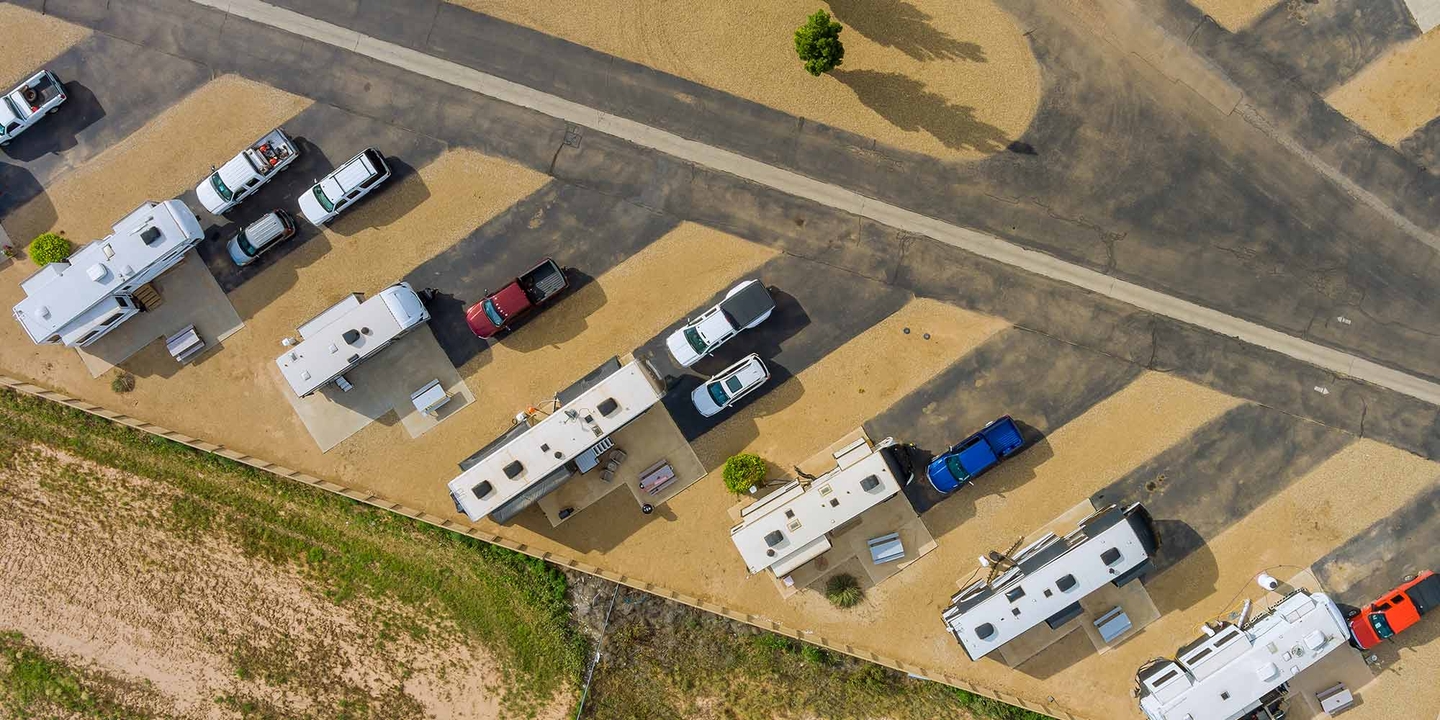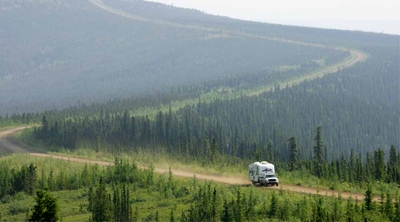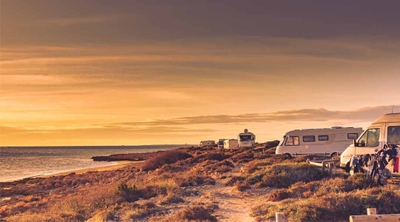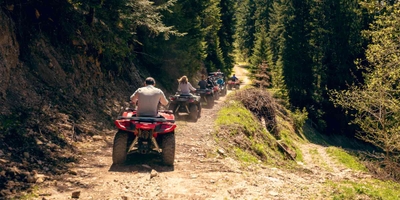RV hookups explained
5 min read
You’re about to embark on the first adventure in your new RV, and your excitement is through the roof. You’ve read countless tips for RV beginners. Still, in the back of your mind, you can feel just a little bit of anxiety and nerves. You’re feeling nervous mainly because you’ve never pulled into a campground with your new rig, not to mention hooked it up to everything. Rest easy because connecting your RV hookups will not be as difficult as you think. Read on to learn what you need to know before your first trip.
The first thing I do when I pull into our new spot is ensure our RV is leveled out and secured. I also get the slide-outs pulled out. If you don’t have slide-outs, there’s no need to worry about this. Our slide-outs aren’t located near our RV hookups, but if yours are you may want to pull them out after you get everything hooked up. Learn more about RV utility hookups and the RV hookup process.
RV electrical hookups
First, check the power supply box. As you can see from the picture below, this campground has both 50 and 20-amp service. A lot of campgrounds, especially state parks, have 30-amp services. 50-amp plug-ins have three flat prongs and one round prong, while 30-amp plug-ins have two flat-angled prongs and one round prong. Twenty-amp plug-ins are your standard house plug-in with two straight flat prongs and one round prong.
Here is an example of the female plug-in for 50-amp:
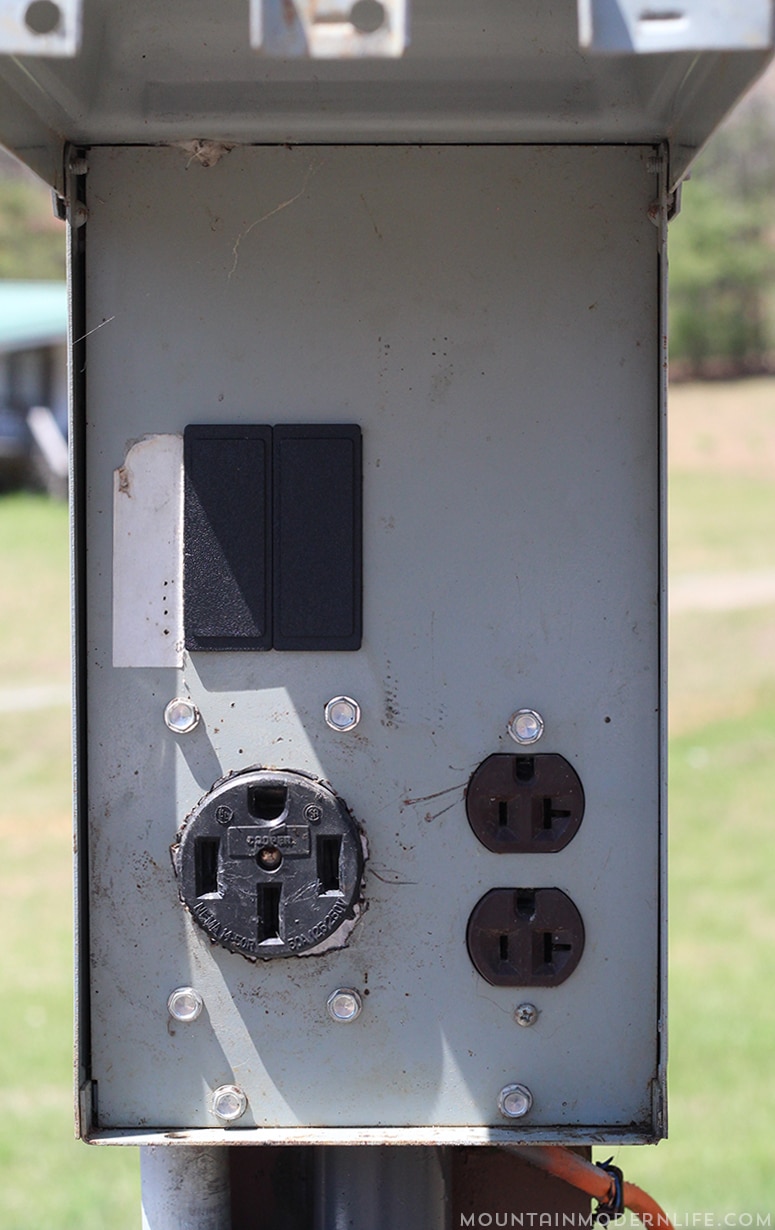
This is an example of the female plug-in for 30-amp:

Now that you have established the types of connections you need, you’ll have to decide which version you have. This campground has 50-amp service. When we stay at campgrounds that only offer 30-amp service, we use a step-down adaptor (or dog bone) to convert our RV’s 50-amp connection into a 30-amp connection. You can see what that looks like below:
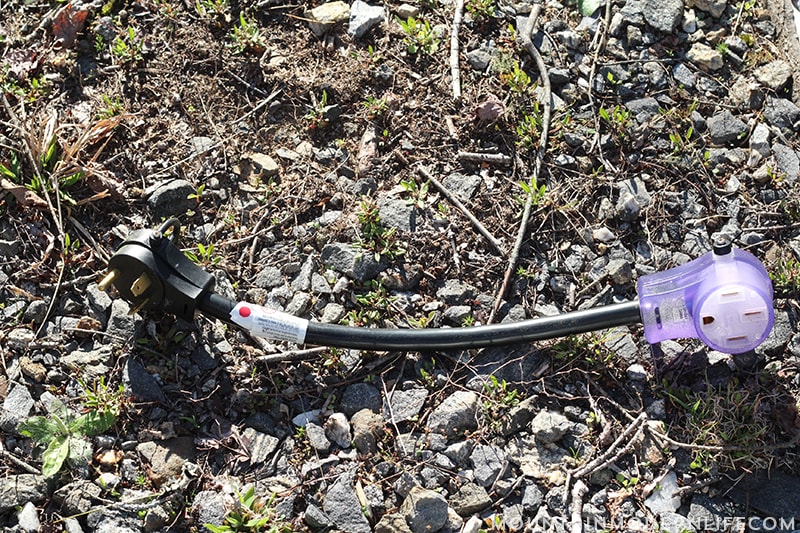
At this point, you know your power and the campground’s power, so it’s time to get connected using the correct plug-in. You’ll first want to cut the power to the power supply box to which you’ll connect. Most campgrounds have a breaker switch right in the box. With the power turned off, you can plug your rig into the power supply.
After securely connecting the plug, flip the breaker switch back to the on position. Now you have power.
RV water hookups
Now it’s time to get the water flowing through your rig. You’ll want to grab your fresh water drinking hose. When hooking the water up to your RV, you must make sure your hose specifies it’s for drinking water. You’ll want to grab your water pressure regulator next. The main reason to use a water pressure regulator is to ensure the RV water hookup isn’t coming into your system too fast. Otherwise, it can create problems for your system.
This is the one we use, though many options exist. You’ll need to do a little research to decide which is best for you.
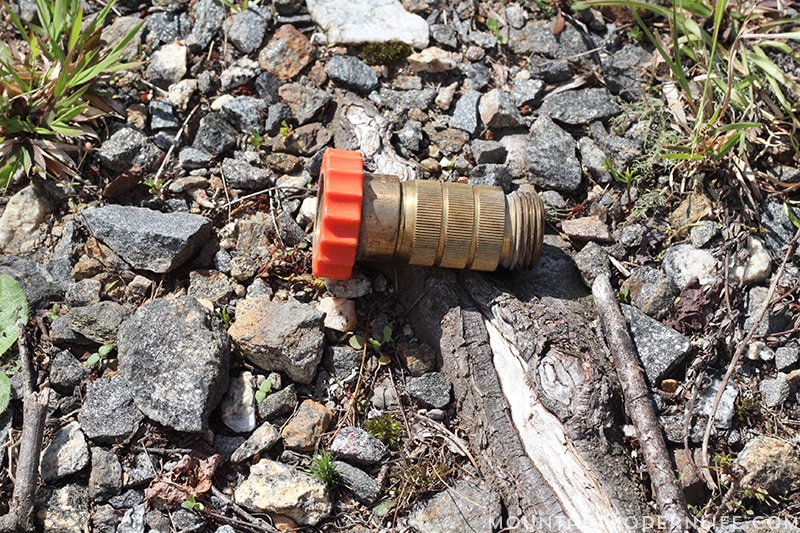
The next piece you’ll need to grab is your water filter. While this isn’t mandatory, we’ve found it helps eliminate contaminants. Now you have all the pieces you’ll need to hook your water up. I’ve seen many different setups where to plug up the water regulator and filter, so I recommend researching to determine which works best for you. Below are a couple of photos showing how we connect our water.
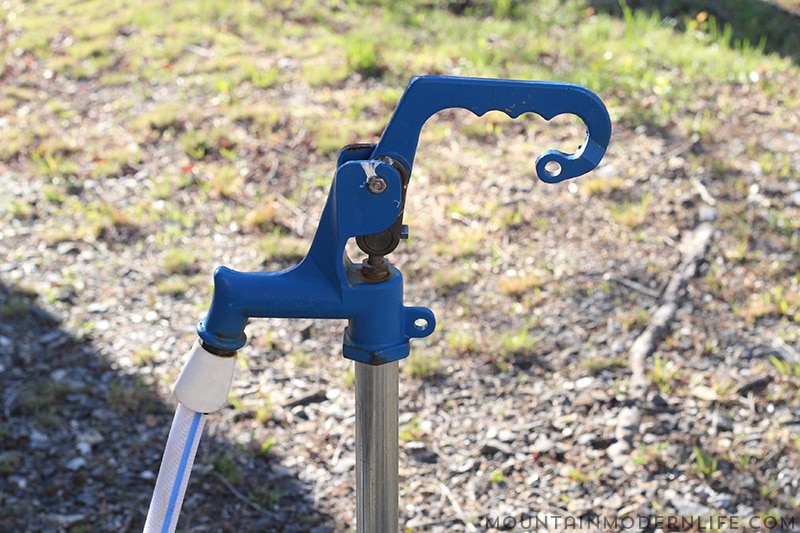
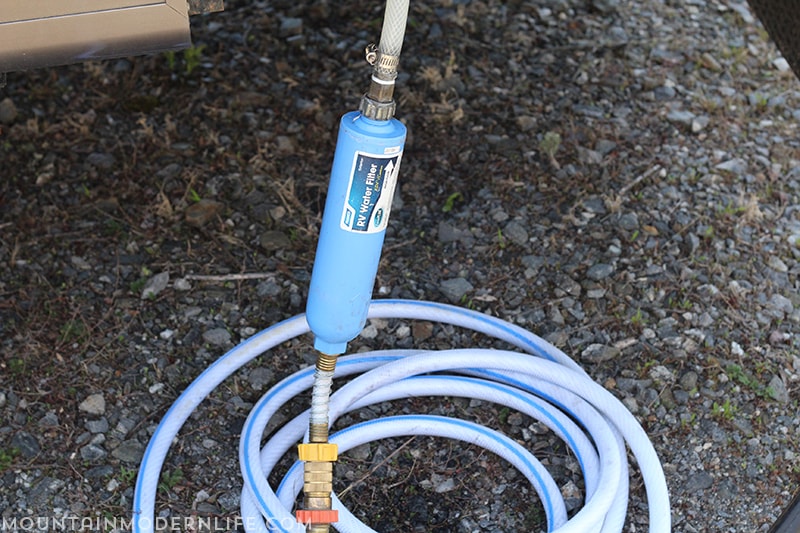
It’s essential to set your water system to City Water and not your water tank and that you turn your water pump off when you connect to City Water.
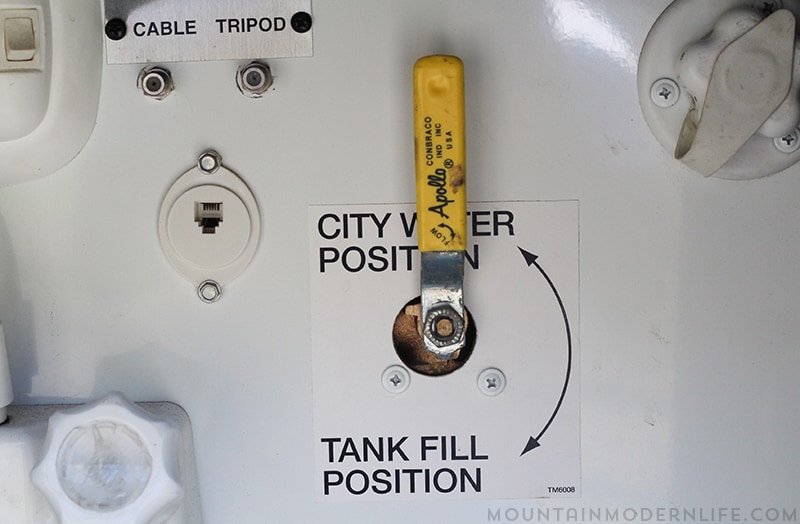
RV cable TV hookups
RV cable hook up works the same as connecting your cable box at home. If your campground provides cable access, take the coaxial cable and connect one end to the cable supply and the other to your rig.
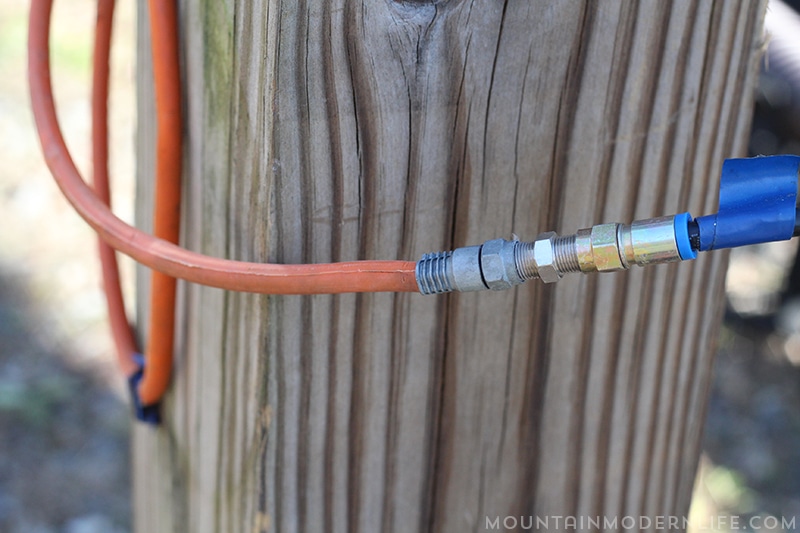
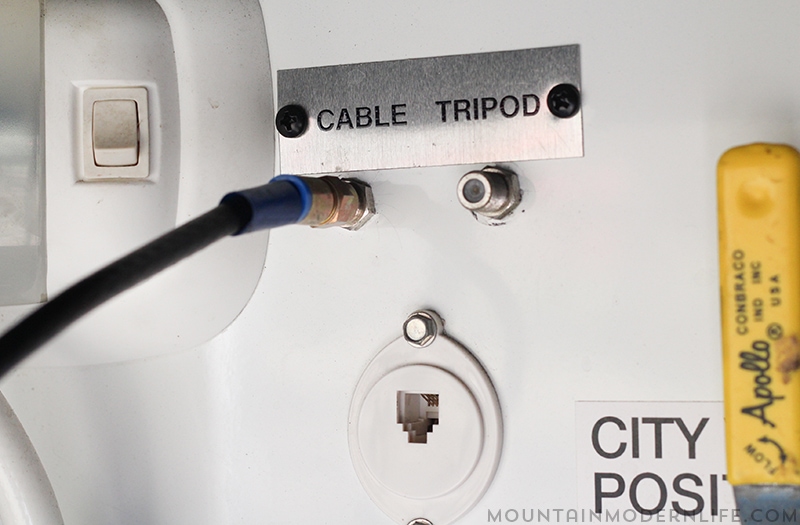
RV sewer hookup
Provided the RV spot you’re staying at offers RV sewer hookups, here’s how to connect it. First, put on some gloves. I keep a little box of disposable gloves in the sewer compartment, though I’ve seen many people use gloves they can wash and reuse. I’ve never noticed any “contaminants” on my gloves, but it’s better to be safe than sorry.
Check your grey and black tank pulls to ensure they’re closed. Attach the sewer hose to your RV drain spout using the twist-on connector.

At this stage, I like to take my sewer hose support and run it from where I’ve attached the end of my hose to the RV to the sewer drain.
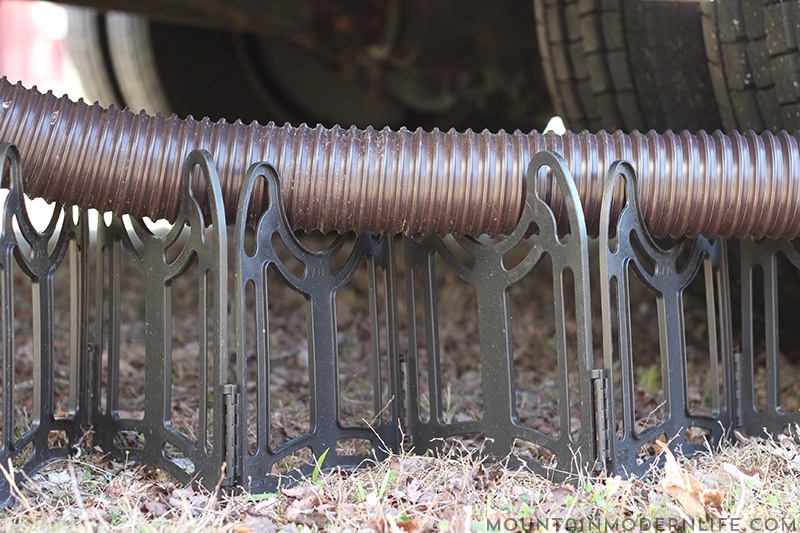
At the end of your hose, attach your elbow to the sewer drain, then put it in place.
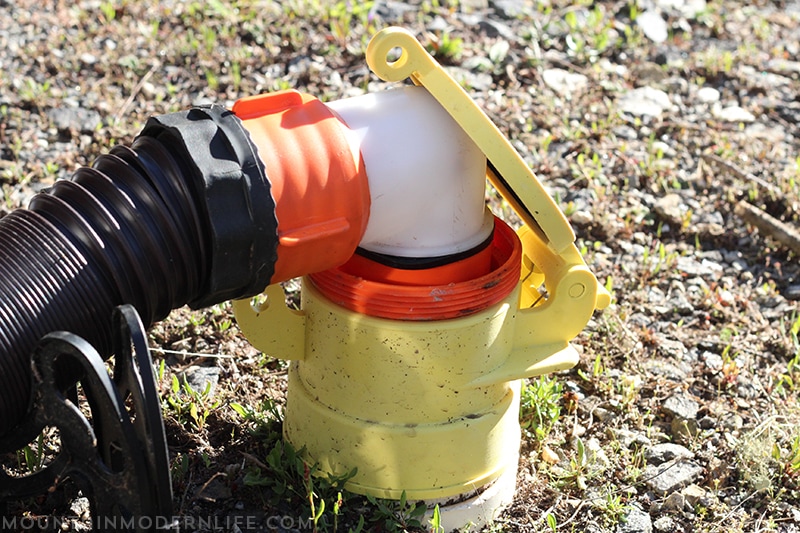
Looking at the elbow above, you can see it sits well into the sewer drain. It has threads, so you can generally screw it into position. If the sewer drain has threads, you’ll want to use them — some places don’t, so keep that in mind.
As you go through this process a few times, you will learn approaches you like and dislike. The best tactic is to roll with the punches, learn as you go, and remember your RV was made for fun, so try to make the best of all aspects of RV life. Learn more about RV life, including tips for RV storage, keeping mice out of your RV, and managing RV humidity.
